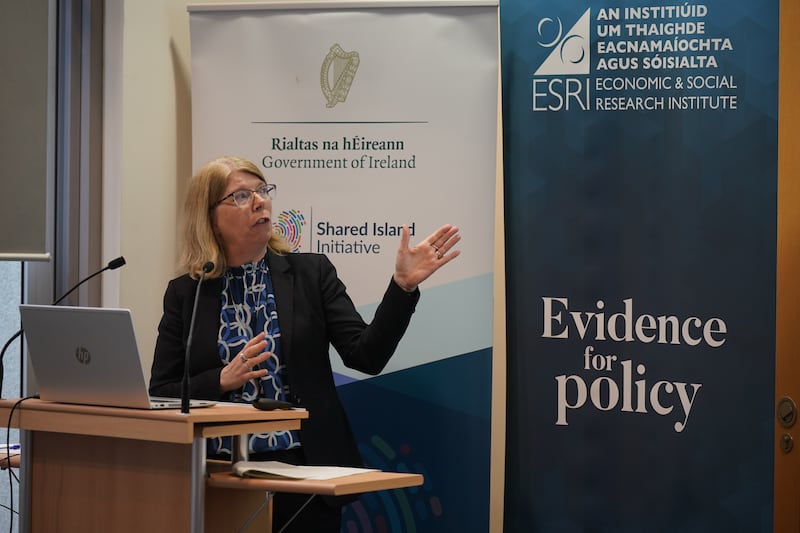THE current entry requirements to attend university in the Republic disadvantage northern students, a new report has said.
The Economic and Social Research Institute (ESRI) found levels of cross-border mobility are relatively low when it comes to higher level education.
Significantly more students from the island cross the Irish Sea than cross the border to study.
Just 0.6 per cent of students in the Republic are from the north, while 2.4 per cent of students in Northern Ireland come from across the border.
The new research, examining ‘institutional barriers limit cross-border student mobility’, has been published in partnership with the Shared Island Unit in the Department of the Taoiseach.
Examining data from 2020/21, ESRI found just 1,255 students from Northern Ireland attended university in the Republic, while just 1,170 travelled the other way.
Read More
- Republic's universities look to attract students from Northern Ireland after decline in applicants
- Universities in Northern Ireland 'least likely' to operate foodbanks, says new research
- International students at Northern Ireland's universities quadruple in four years
Professor Emer Smyth, who co-authored the report, said: “Current higher education entry requirements in Ireland appear to disadvantage students from Northern Ireland.”
Northern students are able to apply through the Republic’s Central Applications Office (CAO), but they need to take four A-levels to achieve maximum points.
ESRI said “only a handful of students in Northern Ireland do so”.
In addition, ESRI said language requirement for many courses limits access for students from the north, where smaller numbers take a foreign language at A- or GCSE-level compared to the number of leaving certificate students.
“An adjustment of the points equivalences would likely make studying in Ireland a more realistic option for those from Northern Ireland,” said Prof Smyth.
“Although only one barrier to mobility, a change would have an important symbolic value in being seen as welcoming to students from Northern Ireland.”
ESRI found a higher level of students from both sides of the border attend university in Britain.
Just over 4,000 students from the Republic went to study Britain in 2020/21.
The study found 13,685 students from Northern Ireland crossed the Irish Sea to attend university.
ESRI said it reflected high levels of competition for places, with very little mobility in the opposite direction.
The report found a substantial proportion of applications to study elsewhere are for highly competitive medical-related courses, indicating the role of availability of places in driving mobility decisions.
Geography also plays an important role, with students from the north more likely to apply for courses in areas close to the border and in Dublin.
Report co-authoer Dr Merike Darmody said student mobility can foster greater north-south cohesion.
“The study findings highlight the scope for greater cooperation across the island of Ireland in meeting student needs.”
Launching the study on Monday, the Republic’s Minister for Further and Higher Education, Simon Harris, said: “Today's report shows us once more the vital role education plays in strengthening relations north and south.
“I am committed to working with higher and further education institutions and with partners in the UK Government and Northern Ireland to make it as easy as possible for students to choose to study in either jurisdiction.
“This is really important in deepening our connections both north/south and east/west and in ensuring that young people have access to the best possible educational opportunities.”








